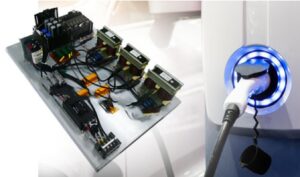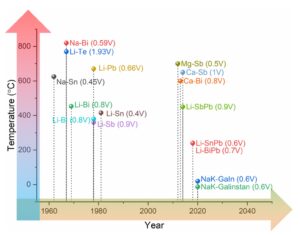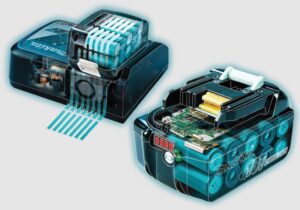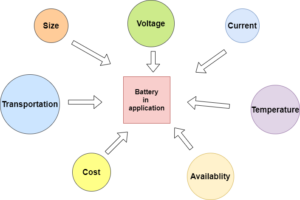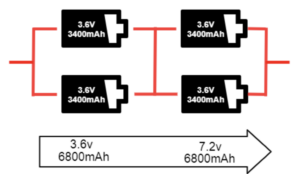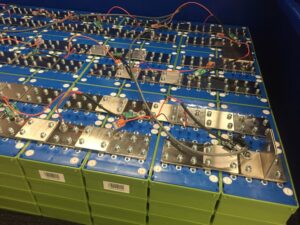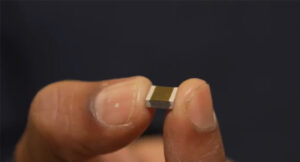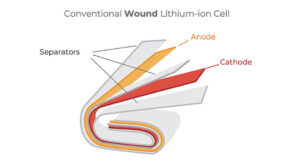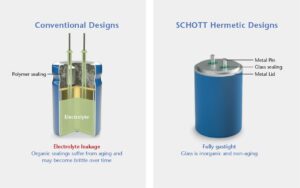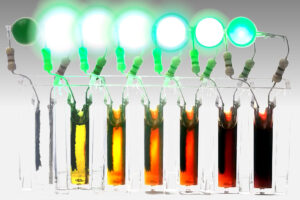Vehicle-to-grid (V2G) technology is often touted as one key to a more sustainable energy infrastructure. Like other areas where technology strongly impinges on economic and social interactions, however, the reality is complex and nuanced. Battery chargers can be a particularly daunting technical problem when implementing V2G. The charger must be bidirectional and offer high efficiency.…
How do liquid metal batteries fit in EV and BESS designs?
Liquid metal batteries are being developed primarily for battery energy storage system (BESS) systems but may find future applications in electric vehicles (EVs) and wearables and portable devices. The first commercial BESS using a liquid metal battery is expected to become operational soon, but the longer-term outlook for large-scale market penetration remains cloudy. The first…
What’s the difference between batteries for power tools?
There’s more variety available in power tool batteries than might be expected. Of course, various rechargeable Li chemistries dominate, and battery management systems (BMS) are critical, but there are also power tool batteries that can automatically switch their output voltage to suit the needs of specific tools; thermal management can be important for both chargers…
What are the different battery types for specific applications?
In this article, we will learn how to choose a battery according to the specifications and requirements of your application. Some applications need more power, and some need to be cheap with less power. There are various factors and parameters that to consider when choosing the best battery for your application. No one battery is…
Battery configurations (series and parallel) and their protections
A single cell is not sufficient for some devices. To achieve the desired voltage, the cells are connected in series to add to the voltage of the cells. The cells are connected in parallel to reach the desired capacity by adding ampere-hour (Ah) to reach the desired capacity. This combination of cells is called a…
Design the right BMS for LiFePO4 batteries
By JD DiGiacomandrea, Green Cubes Technology Learn why Lithium-ion-phosphate batteries need the right battery-management system to maximize their useful life. It’s all about chemistry. Lithium-ion (Li-ion) batteries provide high energy density, low weight, and long run times. Today, they’re in portable designs. Their popularity has spawned a few sub-chemistries that all use the principle of…
Breaking the microbattery barrier: solid-state lithium battery tech enables next-gen wearables and hearables
Solid-state lithium microbattery technology is poised to leapfrog Li-ion and Li-poly alternatives for hearable and wearable devices. By Arvind Kamath, Ensurge Micropower The more popular digital health and fitness wearables and hearables become, the more frustrating the shortcomings of their rechargeable microbatteries. Decades-old Lithium-Ion (Li-ion) technology has reached its limits while handcuffing product developers to…
Harnessing silicon: the future of lithium-ion batteries
By Ashok Lahiri, Enovix Corporation The first lithium-ion (Li-ion) battery, developed and commercialized by Sony Corporation in 1991, provided a step-change increase in energy density for its handheld camcorder — a harbinger of the many power-hungry portable electronic devices to come. Without this battery innovation, the brick-size cell phone of the 1980s would never have…
How do consumer and industrial Li batteries differ?
Consumer (sometimes referred to as commercial) lithium (Li) batteries offer better performance compared with lower-cost alkaline, nickel-cadmium (NiCd), or nickel metal hydride (NiMH) alternatives, but industrial Li batteries are even higher in performance. This FAQ looks at examples of chemistries for primary and secondary Li batteries in consumer and industrial devices including the use of…
What’s different about industrial and medical Li batteries?
In many cases, the difference is related to regulatory demands versus environmental demands. Both segments require high levels of safety and performance from Li batteries. Medical applications have numerous strict regulatory and certification requirements while industrial systems tend to have more challenging environmental performance needs. This FAQ looks at the extensive standards defined for medical…

